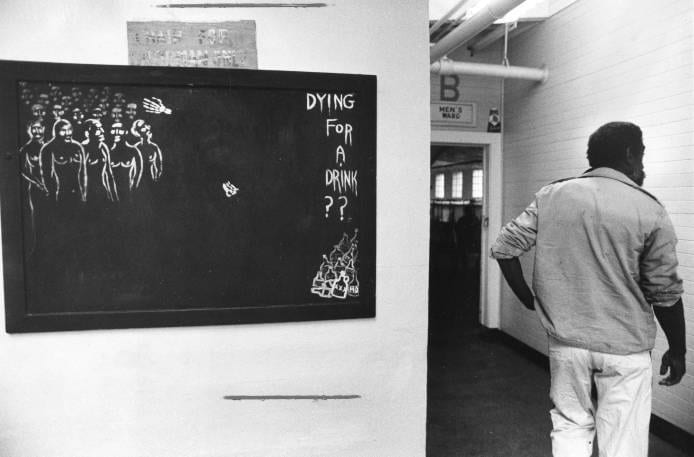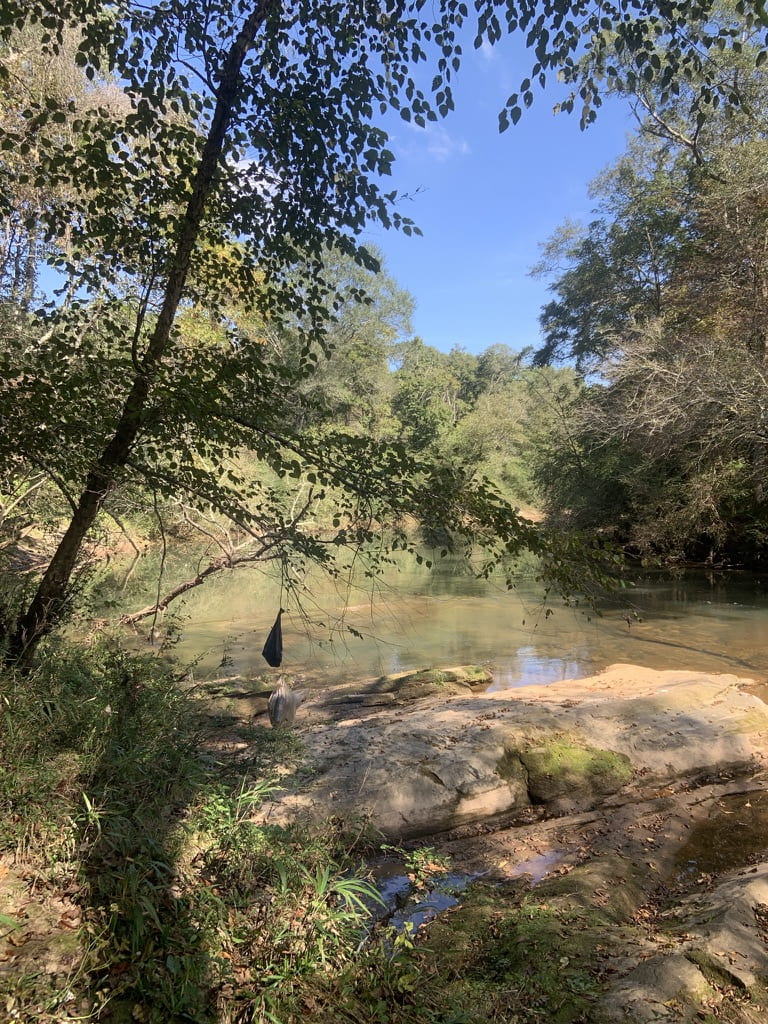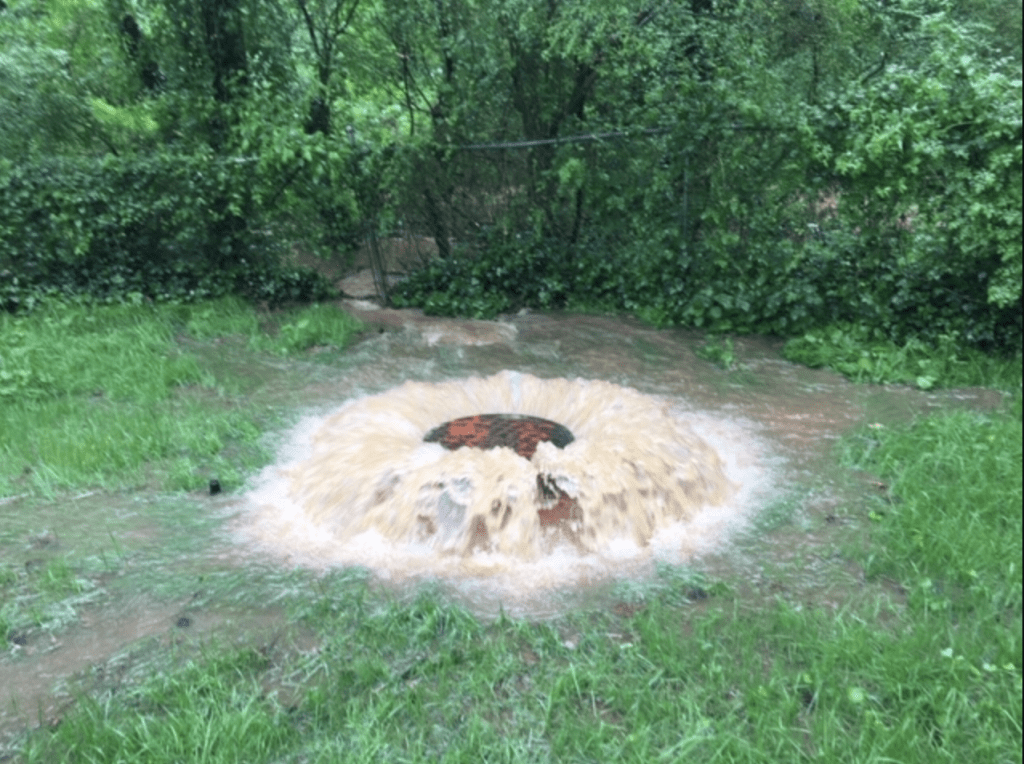The Old Atlanta Prison Farm has become a strong source of controversy in Atlanta’s political sphere due to the City of Atlanta’s future plans for the land. The prison was located in southeast Dekalb on 1248 acres of forest next to the South River. For some Atlantans, this revelation might come as a surprise. As a native Atlantan who grew up in southeast Decatur 5 miles away from part of the land that is now Cedar Grove Middle School, this discovery was a shock. For others, it’s not so surprising considering Atlanta’s environmental history. It’s hard to imagine trees where there are now buildings, but there are many green spaces inside the perimeter that are clues to this past.
Atlanta plans to sell the land to BlackHall Studios, meaning many trees will have to be cut down to build what Blackhall Studios wants to be the biggest sound stage in the nation. The world is currently in a vulnerable environmental climate; these actions put our city at further risk. The city also plans to allot 300 acres of the land to build an extensive facility as well as a mock city, hence the nicknamed “cop city.” Considering the history of this space as well as environmental issues, these future plans should concern all Atlantans.
History of the Honor Farm
The land that was to become the prison farm was first owned by Lochlin Johnson, who was said to own the “finest plantation in the county.” 1 In 1918, the 1248 acres was taken into possession by the Bureau of Prisons and United States Federal Penitentiary in Atlanta for $160,000. The materials needed to run the farm cost the government another $40,000 to round the total cost of the prison to $200,000.

Newspaper article detailing the start of the Honor Farm 2
Over the years, this much money and more would be made back off the backs of unpaid prison labor. The special thing about this prison lies within its name: Honor Farm. What set this prison apart from the federal penitentiary lying just 8 miles away was the mere basis of its existence. In the writing of the history of the farm, the “honor” concept seems to absolve the farm of its exploitation of labor. Prisoners were said to enjoy living ““honored” lives, full of fresh air, hard work, abundant food and tobacco, and even free time and on the weekends.” What type of “criminals” could be worthy of this type of prison life?

Because the prison was based on the honor system, only the most trustworthy of prisoners from the main penitentiary were chosen. These prisoners had light sentences, 1 year or less. Due to the non-violent nature of their crimes, these prisoners were the ones considered to be rehabilitative. “Of the original sixty-nine prisoners on the farm, perhaps sixty were serving sentences for moonshining.” Prison foremen were replaced by agricultural experts and fences and guards with firearms were replaced with an invisible border of trust around the farm. The lack of security meant the prison had to be selective with its prison population.

When contrasting life in the federal penitentiary with life on the prison farm, it’s easier to understand why the philosophy that built the honor farm is seen as admirable. When the farm was just starting up, the prisoners constructed their own dormitories and kitchen. These structures were equipped with a sewage system and running water. Despite these “luxuries” given, the prisoners worked grueling hours from seven in the morning to five in the afternoon, tending to the field. Within the first year, the prisoners created a successful dairy production from the 58 cows and 2 bulls purchased. They were able to use the milk and fresh plants harvested for their meals. This way, prisoners were allowed to benefit from the work they were putting into the farm, creating a “mutually beneficial” for the exploiters and the exploited. As time went on, the farm proved to be a successful economic investment for the city of Atlanta.

Incarcerated persons working with farm equipment at the Atlanta Prison Farm, 1953 5
In its heyday, the prison never exceeded more than 150 prisoners. The workload for these few prisoners only rose as they became responsible for providing nutritional food to the main penitentiary at low costs. In 1930, “a crew of men embarked on an extensive dredging project of former marshland, especially that near the section of the South River which flowed through the property.” The farm provided the city with much economic prosperity and the citizens of Dekalb County were able to reap the benefits of this unpaid labor, In an interview, Mr. Walter P. McCurdy, a Dekalb County DA in the 40’s and 50’s, recounts visiting the farm with his father where they were able to buy “good and cheap” produce. But at what cost? Who was truly benefitting from this honor farm?
The first warden Pet Fry believed the prisoners would leave the farm and take the valuable skills they learned to go on and make honest livings. Simply, he believed in rehabilitation. And could see how the living conditions fostered a more positive environment than serving time in jail cells. The farm was able to keep this philosophy at the core of their values years after Pet Fry was running it. According the United States Penitentiary records in 1955, the good mental and physical health of the men were consistent with past reports by prison officials. By 1959, demand for the price was so high that potential prisoners were placed on waiting list and screened by doctors to determine whether they were trusted to not run away. The warden of that same year, Harry Weisman said: “everything about farming is wholesome, the living atmosphere, the smell of the earth– and you can see the fruits of your labors from the sweat of the brow.”
Once ownership of the property shifted into the hands of the City of Atlanta, the farm was closed by the General Administration in 1965. The land was divided, part of it still being used to operate the prison farm. In 1968, prison inmates staged a sit-in, refusing to work until chronic alcoholics were removed from the prison. The philosophy that built the farm had worn off and the farm continued to slowly deteriorate into the 90s. Part of the former Honor Farm was divided and owned by the school district. That land eventually became Cedar Grove Middle School. In more recent years, the land has been used as a dumping ground. When Atlanta’s Carnegie Library was torn down to make way for the current Fulton County library, pieces of the demolition were stored in a field. The City wanted to use the land for solid waste purposes. Due to the Senate Bill 32 of 1996 or 1997 which states that landfills can not be located within a certain radius of each other. This is one example of the law preventing environmental damage, but with their future plans for the land, it seems like the City of Atlanta is more committed to monetary gain rather than environmental preservation. The land’s neighboring river, the South River, is already suffering from the environmental negligence of Dekalb County.
Sewage in the South River
I’ve lived in Southeast Dekalb for the majority of my life. My childhood home is located in southeast Decatur, 5 miles from Cedar Grove Middle School, part of what used to be the Honor Farm. I’ve been living in Ellenwood, 0.5 miles from the Panola Mountain Trailhead and the South River, for the past few years. Dekalb County has been involved in controversy with environmentalists over its treatment of the South River. In 2021, the American Rivers organization published a report on America’s most endangered rivers. The South River is among the 10 rivers in the report. The problem lies within Dekalb County’s failure to upgrade its sewage system, resulting in sewage spilling into the river. In 2010, the county entered a consent decree with the Environmental Protection Agency and Environmental Protection Division. They were given a 2020 deadline to repair the county’s sewer system in “priority areas”, while the non-priority areas received no deadline. 7 The non-priority areas consist of more than two thirds of the sewer system, the entire navigable length of the South River, where the highest density of Black residents in the state live. It’s no coincidence that these sewage spillages mostly occur in these areas.

rocks, river and trees 
trees reflected in water 
trash bags left behind by visitors 
clear blue water
When I would leave my house early in the mornings, there would constantly be a foul smell, emerging from what I wrongly thought was the river. The smell was actually coming from the Dekalb County Landfill, located about 3.5 miles from my house. In their study on the correlation between hazardous waste facilities and racial inequality, Paul Mohai and Robin Saha found “that the magnitude of racial disparities around hazardous waste facilities is much greater than previous national studies have reported.” 12 Even when accounting for socio-political and economic variables, racial disparities exist, suggesting that factors such as racial targeting and housing discrimination are associated with the location of our nation’s hazardous waste facilities. Mohai and Saha could not directly measure the environmental risks, but the proximity of hazardous waste facilities to nearby residential populations indicates the presence of other probable quality of life like noxious odors, visual blight, traffic congestion, depressed property values, social stigmatization and other things. A lack of accountability from the EPA, allows Dekalb County to commit environmental acts of violence against already vulnerable communities.

The Land’s Future
The City of Atlanta wants to sell 300 acres of the former Honor Farm land to Blackhall Studios. They plan to cut down a substantial amount of trees, in order to build the nation’s biggest soundstage. Known as the city within a forest, trees are fundamental to our wellbeing. In their assessment of Urban Tree Canopy in the City of Atlanta, Georgia Tech researchers stress the importance of trees: “Trees provide a stormwater management service by intercepting rainfall that would otherwise flow directly into water bodies and the drainage system, causing streambank erosion and potentially overwhelming the stormwater system, especially in areas with combined storm and sanitary sewers.” 14 The plan to cut down trees could have further disastrous effects for the South River and its existing sewage issue.
Atlanta’s plans to build a police training facility might sound like a good idea to people who believe that the police’s existence equals the betterment of society and ensures citizen’s safety. The police’s performance as a safety net for the general population is not consistent with the role they assumed in American history. In Slavery by Another Name, Douglas Blackmon begins his book with the story of Green Cottenham. Cottenham was arrested by the sheriff of Shelby County, Alabama and charged with vagrancy. 15 Following slavery, the law of vagrancy was abused by police, judges and other high political officials in order to criminalize unemployed black men. This abuse of power was made possible by a loophole in the 13th amendment that allowed for slavery as a punishment for crime. From this loophole, convict leasing was born. Because he could not afford his fees, Cottenham was sold to the U.S. Steel Corporation to work in a mine, while they gave the county $12 a month to pay off his legal fees. Instances like Cottenham’s are not unique to Alabama. At the beginning of the 20th century, Atlanta was becoming the economic hotspot of the South. Receiving “help” from exploited prisoners allowed many prominent men among Atlanta’s elite to further their companies success. James W. English, a former mayor of Atlanta, used forced labor to build his Chattahoochee Brick Company. Joel Hurt, a popular real estate developer and eventual co-founder of Suntrust Bank personally negotiated the sale of convicts that would work in his labor mines. When him and his son were questioned on the inhumane conditions of their camps, they were unforgiving and doubled down on their actions. Along the South River near Constitution Lakes, J.R. Knapp and S.F. Cain bought 51 acres in 1892 in order to start their own brick works company. There are conflicting reports on whether the South River Brick Company used convict labor, but it would have been impossible for owners Knapp and Cain to keep up with their competitors without this additional labor. It seems it’s impossible to escape Atlanta’s sickening history. Horrors lie within the land of the Old Atlanta Prison Farm and the South River, buried underneath years of dirt cultivated by workers and prisoners.
Given the history of this land, the city’s plans for it are terribly ironic, but reveal the harsh truth that they are still willing to exploit and risk the lives of African Americans and poor people for the economic “progression” of the city. Instead of perpetuating history’s horrors, the city should utilize these environmental structures to ensure the health and wellbeing of its citizens.
Works Cited
- Wootten, Jillian, “An Historical Analysis of the Atlanta Prison Farm,” City Planning 6012, 1999.https://dekalbhistory.org/wp-content/uploads/2019/11/historical-analysis-of-honor-farm.pdf ↩
- “TO OPEN ‘HONOR FARM’ FOR FEDERAL PRISON: MERITORIOUS PRISONERS TO BE PLACED ON GOVERNMENT LAND ON HONOR PLAN.” The Atlanta Constitution (1881-1945), Dec 28, 1919. https://www.proquest.com/historical-newspapers/open-honor-farm-federal-prison/docview/497256224/se-2?accountid=11226. ↩
- AJCN152-001j, Atlanta Journal-Constitution Photographic Archives. Special Collections and Archives, Georgia State University Library. ↩
- AJCP142-028g, Atlanta Journal-Constitution Photographic Archives. Special Collections and Archives, Georgia State University Library. https://digitalcollections.library.gsu.edu/digital/collection/ajc/id/14791 ↩
- AJCN152-001b, Atlanta Journal-Constitution Photographic Archives. Special Collections and Archives, Georgia State University Library. ↩
- Ashworth, Richard. “Jury Raps City Prison Crowding: Sees Health Peril to Farm Inmates.” The Atlanta Constitution (1946-1984), Oct 29, 1960. https://www.proquest.com/historical-newspapers/jury-raps-city-prison-crowding/docview/1613146409/se-2?accountid=11226. ↩
- American Rivers, “America’s Most Endangered Rivers,” American Rivers Organization (2021), 11. https://www.americanrivers.org/wp-content/uploads/2021/04/MER2021_FINAL_Report_ReducedSize-1-1.pdf. ↩
- Photo taken by Mia Gant ↩
- Photo taken by Mia Gant ↩
- Photo taken by Mia Gant ↩
- Photo taken by Mia Gant ↩
- Mohai, Paul, and Robin Saha, “Racial Inequality in the Distribution of Hazardous Waste: A National-Level Reassessment,” Social Problems, Inequalities, 54, no. 3 (August 1, 2007): 344.https://doi.org/10.1525/sp.2007.54.3.343 ↩
- Photo taken by Melanie Court ↩
- Anthony Giarrusso and Sarah Smith, Assessing Urban Tree Canopy in the City of Atlanta; A Baseline Canopy Study (Atlanta: Department of Planning and Community Development, 2014), 7.https://www.atlantaga.gov/Home/ShowDocument?id=14722. ↩
- Douglas Blackmon, Slavery by Another Name: The Re-Enslavement of Black Americans from the Civil War to World War II(New York: Double Day, 2008), 1. ↩


